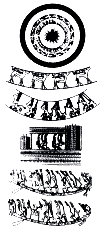Dongson Culture of Vietnam
Under the Cultural Exchange Programme between the Government of India and Vietnam, the IGNCA’s delegate visited Dongson sites to fathom its origin, cultural nuances and influence of contemporary cultures.
The civilization of Dongson flourised in North Vietnam. It developed from a series of consecutively related culture complexes that began at the end of the third millennium B.C. with Phung Nguyen, a settlement in the valley and plain of Hong River in Vinh Phu province, north-west of Hanoi. The Phung Nguyen, a late neolithic and early bronze culture developed into Dong Dau about the middle of the second millennium B.C. and Go Mun, in turn, evolved directly into the Dongson culture.
Since, 19th century many scholars have tried to analyse Dongsonian culture but its antiquity and influence of other contemporary civilizations remained an enigma for many. Let us try to gauge the total scenario from arte-facts found in Dongson and varied points of view aired by scholars world-wide.
The first excavated drums came from the site of Dongson, in Than Hoa province south of Hanoi by M.Pajot in 1924. Goloubew dated the early type of drum (Heger Type I) to the middle or the second half of the first century A.D. Afterwards Dongson bronze drums were reported from South China, Thailand, Laos, West Malaysia, and Indonesia as far east as western Irinian Java. Largest concentration of the drums is from northern Vietnam. Thus the argument over the origin and date of Dongson Culture started and several theories were put forward from time to time. Some assert eastern European origin while others Chinese and Indian origin, although assumption of an indigenous origin is more plausible.
Dongson sites, dated into the metal age, became first known in the twentieth century. Coedes questions whether it is proper to speak of a “Bronze Age” in further India. The use of stone continued very late there, and iron appeared almost simultaneously with bronze. Under Han Dynasty, Chinese weapons were still made of bronze and iron had only recently been imported. There are no remains from Dongson civilization which corresponds to the age of bronze in Tonkin and North Vietnam that can be considered to have preceded the last century before christ.
Researcher Olov Janse excavated several Dongson sites and opined that the dwelling site of Dongson must have belonged to a native Indonesian or Proto-Malayan people, where industry had a neolithic aspects in its rude unpolished and polished stone implements and primitive basket pottery. The use of metal especially bronze, pottery of high quality and numerous other cultural elements might be introduced after the contact with the Chinese probably in the third century B.C.
The unearthing of decorated daggers, the bronze image holding pot on the hands, the trident and appearance of plaque on the geometric art of the drum suggest the theory of Indian origin of Dongson Culture. Goslier states that the transition from Neolithic is impossible to pinpoint. Metal appears suddenlay, clear proof that it came from abroad, in the midst of civilizations that remained imperturbable Neolithic, and were to remain so for centuries. Bronze, certainly imported from China or India appears towards the beginning of the first millennium in all the Neolithic sites in the peninsula. But it hardly takes pride of place until the 6th century B.C. which may therefore be taken as the beginning of the Bronze Age and of Early History. Coedes opines that at the time of Indian expansion in South East Asia, the Dongson people were not uncultivated savages. They had an organised society and Indian endowed with a civilization that had some traits in common with their own. Vietnamese scholars, Thong suggests that the Dongson culture spread from a radiation centre in the middle reaches of the Red river to the Quang region beyond Cloud Col in the south and as fer as Lake Dongting in the north, encompassing Yunnan, Quangdong and Gauanxi in China.
From the above analysis, it seems that the theory of indigenous origin seems to be more plausible and Go Mun period culminates into a well advanced Dongson Culture around 8th century B.C. It brought to an end by the Han conquest in the 1st century A.D. Contact of Indian culture cannot be overruled. Probably, Indian art and culture was introduced during the development process of Dongson Culture.
[ Newsletter | List of Newsletter ]





